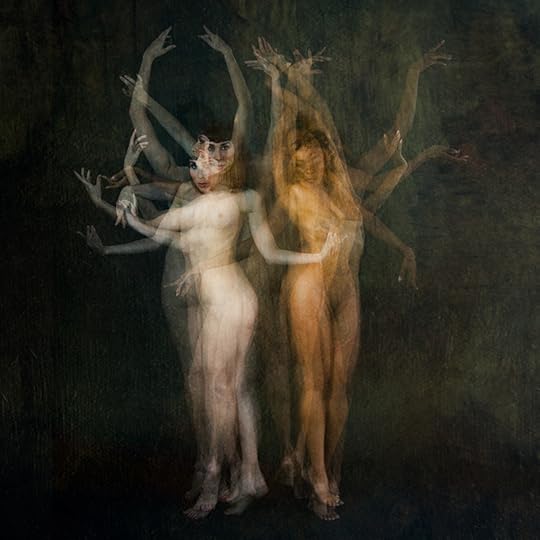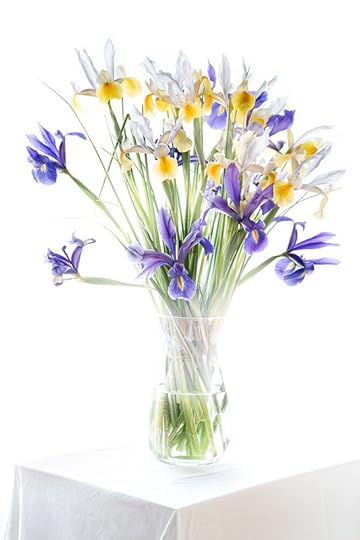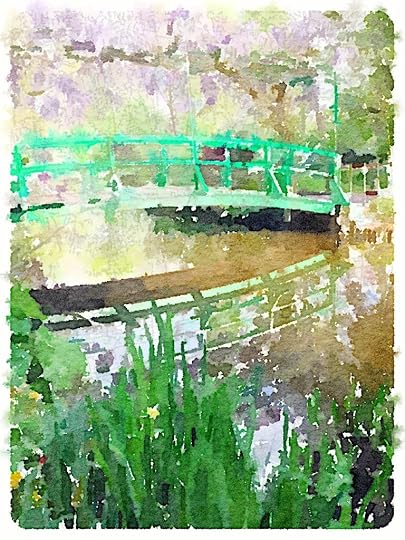Harold Davis's Blog, page 181
May 31, 2014
Painting in Transparency Webinar Recording Available
Click here for unlimited access to the Painting in Transparency Using a High-Key Layer Stack Webinar Recording (the cost is $19.95).
 Are you intrigued by transparent flower photos? Ever wanted to know how to make them? Well, here’s your chance!
Are you intrigued by transparent flower photos? Ever wanted to know how to make them? Well, here’s your chance!
With photography on a light box, once you photograph a bracketed high-key exposure sequence, then the the next step is to assemble a layer stack. As you build your layer stack, successively darker layers are masked and painted in to create the illusion of transparency. The results surprise and delight!
Digital artist and master photographer Harold Davis states, “My transparent botanical art has been greatly acclaimed and emulated. Flowers can create the most beautiful compositions. Photographers who are interested in photographing flowers should give this technique a try. Certainly, one of the most sensitive parts of the process is painting in the high-key layer stack.”
Learn this exciting technique from its creator! This webinar is chock full of inspirational examples and have ample time for Q & A
The Painting in Transparency Using a High-Key Layer Stack Webinar with Harold Davis covers:
Photographing a bracketed high-key sequence on a light box
Workflow considerations and options
Multi-RAW processing layers as needed
Creating the layer stack in Photoshop
Adding a layer mask
Using the Brush Tool
Using the Gradient Tool
Next steps after the layer stack has been created
Click here to register for unlimited access to the webinar recording today for only $19.95.
Note: Now that we have solved the gremlins that plagued the video in our early webinars, we are opening second sessions of the early courses. If you register for each live sessions ($29.95) you also get access to the associated recording, which otherwise will be available after the session for $19.95.
Register by clicking here for Using Backgrounds and Textures—Second Session with Harold Davis (Thursday June 5 at 7PM PT).
Register by clicking here for Selective Sharpening with LAB Color—Second Session with Harold Davis (Sunday June 8 at 3PM PT).

May 30, 2014
May 29, 2014
Using Backgrounds and Textures with Harold Davis Webinar Recording
Have you ever wanted to turn your photos into fine art design pieces? With a little bit of Photoshop know-how, a few inexpensive tools, and the techniques explained in this webinar, it’s easy to create unique art imagery, guided by your vision and creativity.
Placing a photo on a background creates an image that looks like a botanical illustration. Adding a texture to a photo is can be used for an impressionistic and/or painterly effect.
Digital artist and master photographer Harold Davis states, “The two primary techniques that I use to turn straightforward photos into art are to add a photo to a background, and to add a texture to photos. These two techniques have a very visual different impact, and can be particularly effective with my botanical art.”
It’s easy to add a whole set of techniques to your creative use of Photoshop!
In this webinar recording, Harold Davis explains how you can use the power of backgrounds and textures in your own work. Using Backgrounds and Textures with Harold Davis webinar explains:
• Creative use of backgrounds and textures
• The difference between a background and a texture
• Making your own backgrounds
• Making your own textures
• Commercial libraries
• How to apply an image to a background
• Using textures and blending modes
• Backgrounds and textures in botannicals
• Using textures with people photography
• Enhancing landscape photos with artistic effects
• What to do, what not to do, and examples
Click here for online access to Using Backgrounds and Textures with Harold Davis ($19.95).

May 28, 2014
Solace for the Wild Rest
Unlike Being and Becoming, there’s rather little Photoshop in Solace for the Wild Rest. This is an in-camera multiple exposure, using eight individual exposures with auto-gain turned on, using the shooting progression explained in Being and Becoming. True, I finished the image with a Photoshop texture overlay, pretty much the same texture and blending mode that I used in When Dahlias Dream (see the bottom image in this story).

Solace for the Wild Rest © Harold Davis

May 27, 2014
Opening reception for Best of Botanicals Show in Oakland
Please consider joining me for the opening reception for the Best of Botanicals exhibition at Photo Oakland on Saturday, June 7, 2014. Best of Botanicals is a national juried photography exhibition, also with a small display of my botanical work. At the reception I will be speaking on “Making the Botanical Photo: The Digital Print As an Artifact.” All sales from the Best of Botanicals exhibition will benefit the San Francisco Botanical Garden.

Tulip Pano © Harold Davis
Photo Oakland is a dedicated gallery space for fine art photographic prints in the East Bay opened in December 2010. It is located at 473 25th Street, between Telegraph and Broadway, Oakland, California. Click here for directions to the gallery.

Peonies mon amour (with inken) © Harold Davis
On Saturday June 7, 2014, the reception will begin at 2PM. My presentation will start at 3PM. Following my remarks, the gallery judges will award the best of show prize.

Irises in a Vase © Harold Davis
Click here for more information about the Best of Botanicals exhibition and the June 7 reception.

May 26, 2014
Photographing Flowers for Transparency FAQ
I often get asked questions about my Photographing Flowers for Transparency on a light box technique. Frequently asked questions range from how the technique works, to where to get (or make) a light box by way of where has Harold Davis explained his technique anyway, and many more questions.
Phyllis and I have decided that the way to deal with this ever-increasing onslaught of email is to create an information repository, hence our new FAQ: Photography Flowers for Transparency. If you have a question about light box photography, please check out the FAQ as a first step. If your question remains unanswered after reading the FAQ, feel free to drop us an email.
Also please keep in mind the October 4-5, 2014 session of the Photographing Flowers for Transparency workshop.

Tulips in a Crowd © Harold Davis

Being and Becoming
To make this image, I started by photographing the beautiful models Kira and Merrique together on a black seamless background with studio strobe lighting. The lighting was set up with a big, soft light on the left, and a smaller, less powerful light through an umbrella on the right.

Being and Becoming © Harold Davis
I made ten in-camera multiple exposures. Each multiple exposure consisted of either five or eight individual exposures. I had auto-gain turned on in my camera, so each multiple exposure was automatically adjusted to compensate for the number of exposures in the sequence. I counted out each individual exposure, and the models paused on each shot.
In Photoshop, I stacked the ten multiple exposures (as if they were star trails!). I tweaked the result a little to get rid of anomalies, like fingernails appearing in mid-air, but mostly this image comes from an “out of the box” in-camera multiple exposures followed by stacking in Photoshop to create a composite.
That makes Being and Becoming a combination of old and new techniques, one of my favorite themes in photography. In-camera multiple exposures are about as old as photography, but the ability to create stacked composites over time is an artifact of the Photoshop era.

May 24, 2014
Selective Sharpening in LAB Color webinar recording

Want to be able to get the nuts and bolts of a subject and play it again as often as you’d like? Access to the following webinar recording is now available. The webinar recording is approximately one hour with video and audio. Listen as many times as you’d like, and play back specific portions as often as you wish. The cost is only $19.95 each.
Click here for online access to Selective Sharpening in LAB Color with Harold Davis
Have you ever over-sharpened an image? (We all have!)
Have you ever wanted to to sharpen just one thing in a photo, not the entire image? If you answer “Yes!” to either of these questions, then this webinar recording is for you!
The internal structure of LAB color makes it ideal for attractive sharpening (without over-sharpening) in Photoshop. This is because you can work on the luminance information, avoiding the unattractive results that can happen when color data is sharpened.
This webinar recording shows how to use the properties of LAB color to selectively sharpen images for aesthetic effect, and teaches you a technique that should be in the toolkit of every photographer who uses Photoshop.
Master photographer and bestselling author Harold Davis says, “I use selective sharpening with LAB color to enhance almost all of my photos. Sharpening with LAB is one of my secret weapons!”
The Selective Sharpening with LAB Color with Harold Davis webinar covers:
Different kinds of sharpening
Using selective sharpening for artistic emphasis
LAB color theory and relative gamut
Understanding the color opponent model
Converting to LAB in Photoshop
Choosing the L-channel in Photoshop
Using the Unsharp Mask Filter
Selectively painting in sharp areas
Converting back to RGB
Click here for online access to Selective Sharpening in LAB Color with Harold Davis (the cost is $19.95 via Paypal).

May 23, 2014
Creative Use of Shutter Speed
If you know what shutter speed does, then you know how to control one of the great creative aspects of photography. Shutter speed is not actually a speed at all—it is a duration of time. In fact, shutter speed refers to the duration of time that the shutter is open, and during which light hits the recording medium (sensor or film). Generations of photography students would not have been confused if the term “shutter speed” had never been used!

Behind the Wall © Harold Davis
With this image of trees along the River Seine in Paris, after much experimentation I found I got the ideal partial blur at 3/10 of a second shutter speed, er, duration of the shutter being open—assuming a slow and steady up and down vertical motion of the camera.

May 20, 2014
Giverny
I’ve been lucky enough to visit Monet’s gardens at Giverny three times in the past year, and each time they’ve been very different. The spring this year was good for tulips, and in the water garden area the wisteria were glorious.

Giverny © Harold Davis
There is a problem working in Monet’s gardens. These gardens are themselves are a work of art. Of course, they have been the most important subject of a great and world famous artist (Claude Monet himself). It’s hard not to look at Monet’s gardens, or to imagery depicting the gardens, without thinking of Monet’s great waterlily paintings.

Giverny Watercolor © Harold Davis
In the shadow of the legendary, my best advice is to have fun—and not worry about the context or comparison too much. That’s what I did this year in Giverny. I had a blast, and look forward to processing more of my images from this very special place.
Related stories: Giverny via iPhone, White Chrysanthemums at Giverny, Dreaming of Giverny, Meditation at Giverny.







